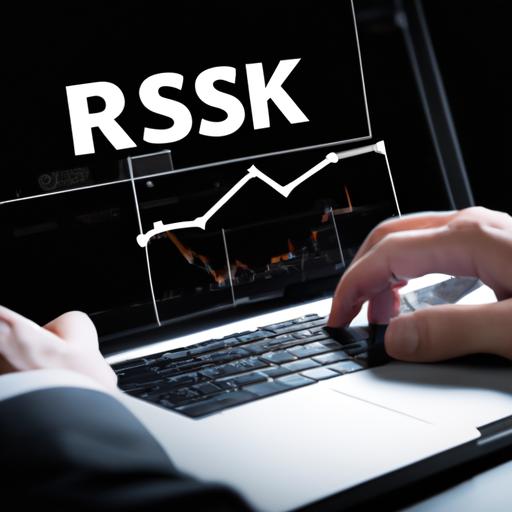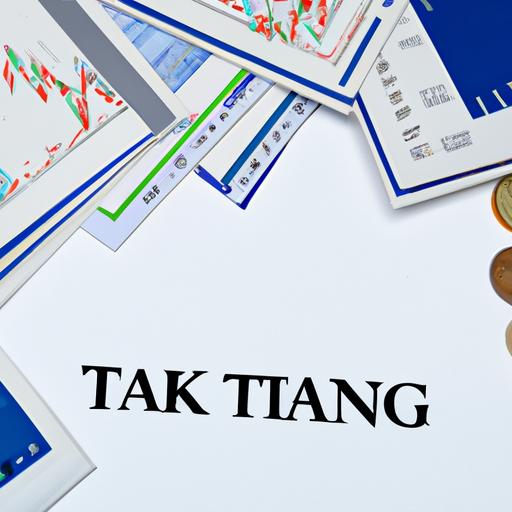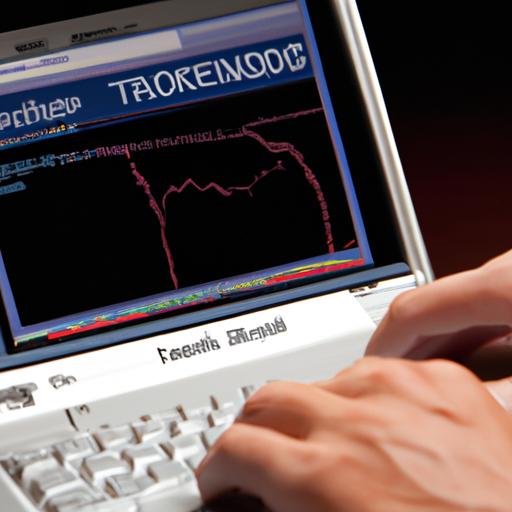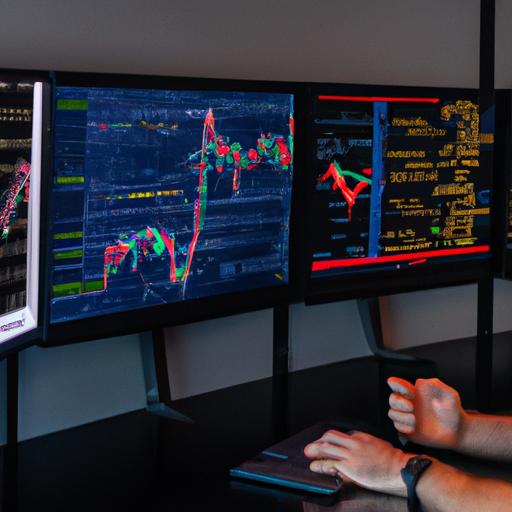Order Management System Trading: Streamlining Your Trading Operations
Welcome to the world of order management system trading! In this article, we will delve into the exciting realm of efficient order management systems and their crucial role in optimizing your trading experience. Whether you are a seasoned trader or just starting out, understanding the importance of an efficient order management system is key to success in the fast-paced trading industry.
Overview of Order Management System Trading
Imagine a well-oiled machine that seamlessly handles and executes all your trading orders with precision and accuracy. That’s exactly what an order management system (OMS) brings to the table. An OMS is a software application designed to simplify and automate the entire order processing lifecycle, from order creation to execution and beyond.
Importance of an Efficient Order Management System in Trading
In the highly competitive trading landscape, time is of the essence. An efficient order management system can make all the difference by ensuring that your trades are executed swiftly and accurately. It eliminates manual errors, reduces operational risks, and enhances your overall trading performance. With an OMS, you can focus on analyzing market trends and making informed investment decisions, rather than getting bogged down by tedious administrative tasks.
Benefits of Using a Reliable Order Management System
Using a reliable order management system goes beyond mere convenience; it can significantly impact your profitability and overall trading experience. Here are some key benefits:
-
Streamlined Order Execution: An OMS enables seamless integration with multiple trading platforms, allowing you to execute trades across various markets and asset classes effortlessly. This streamlines the entire order execution process, saving you time and effort.
-
Automation and Efficiency: A reliable OMS automates routine tasks such as order routing, trade allocation, and reconciliation. This not only eliminates manual errors but also boosts operational efficiency, enabling you to handle higher trade volumes with ease.
-
Real-time Order Tracking: With an OMS, you gain real-time visibility into your orders, allowing you to monitor their status, track executions, and manage exceptions promptly. This level of transparency empowers you to make timely decisions and adapt to market changes swiftly.
-
Compliance and Risk Management: An OMS helps you adhere to regulatory requirements and internal compliance policies. It provides robust risk management features, such as pre-trade risk checks and position monitoring, ensuring that your trading activities stay within defined risk tolerances.
In conclusion, an efficient order management system is the backbone of successful trading operations. It empowers you to navigate the complexities of the market with ease, while enhancing efficiency, accuracy, and profitability. So, why wait? Dive into the world of order management system trading and experience a seamless trading journey like never before. Stay tuned for the next section, where we will explore the various types of order management systems available in the market.
Understanding Order Management Systems
In this section, we will take a closer look at order management systems (OMS) and their significance in the trading world. By understanding the definition, purpose, key features, and different types of OMS available, you’ll gain a comprehensive understanding of how these systems can revolutionize your trading experience.
Definition and Purpose of an Order Management System
An order management system is a software application that facilitates the entire order processing lifecycle, from order creation to execution and post-trade activities. It acts as a centralized hub, integrating with various trading platforms and providing traders with a unified view of their orders across different markets and asset classes.
The primary purpose of an OMS is to streamline the trading process by automating manual tasks, minimizing errors, and increasing efficiency. It empowers traders to manage their orders effectively, track their progress in real-time, and ultimately optimize their trading performance.
Key Features and Functionalities of an Order Management System
Order management systems come equipped with a range of essential features and functionalities that cater to the diverse needs of traders. Here are some key components to look out for:
-
Order Creation and Routing: An OMS allows traders to create, modify, and route orders to various counterparties or exchanges. It ensures accurate and timely transmission of orders, reducing the risk of order mishandling or delays.
-
Trade Execution and Allocation: With an OMS, traders can execute trades seamlessly across multiple markets and allocate them to different accounts or portfolios. This feature enables efficient trade allocation and ensures compliance with regulatory requirements.
-
Order Monitoring and Tracking: OMS provides real-time visibility into order status, allowing traders to monitor their orders’ progress from creation to execution. This feature empowers traders to make informed decisions promptly and respond to market changes effectively.
-
Risk Management and Compliance: OMS incorporates risk management tools to assess and mitigate potential risks associated with trading activities. It enables pre-trade risk checks, monitors position limits, and ensures compliance with regulatory guidelines.
Different Types of Order Management Systems Available in the Market
The market offers a variety of order management systems, each catering to specific trading requirements. Some common types include:
-
Basic OMS: These systems offer essential order management functionalities, suitable for individual traders or small-scale operations.
-
Advanced OMS: Designed for institutional traders or larger firms, advanced OMS provides enhanced features such as algorithmic trading, smart order routing, and comprehensive analytics.
-
Integrated OMS: These systems integrate seamlessly with other trading platforms, such as execution management systems (EMS) or portfolio management systems (PMS), offering a holistic solution for trading needs.
Understanding the fundamentals of order management systems is vital to harnessing their full potential. In the next section, we will explore the pivotal role of order management systems in trading and uncover the benefits they bring to the table. Stay tuned!
Role of Order Management Systems in Trading
Order management systems (OMS) play a pivotal role in the world of trading, revolutionizing how traders execute their strategies and manage their portfolios. Let’s explore the key aspects of how OMS streamline trading processes, ensure accurate order execution, and integrate with other trading platforms and systems.
How Order Management Systems Streamline Trading Processes
Order management systems act as the central hub for all trading activities, bringing together various components of the trading lifecycle into a single, cohesive platform. By consolidating order creation, execution, and monitoring, OMS simplifies the entire trading process, saving time and reducing operational complexities. Gone are the days of manually entering orders across different systems – with an OMS, you can effortlessly manage and track your trades in real-time.
Ensuring Accurate and Timely Order Execution
One of the primary responsibilities of an OMS is to ensure accurate and timely order execution. By leveraging advanced algorithms and automation, OMS minimizes the risk of order errors, such as duplications or incorrect quantities. It also provides real-time visibility into market data and liquidity, empowering traders to make informed decisions and capitalize on favorable market conditions promptly. With an OMS, you can execute trades swiftly, maximizing your potential returns.
Integration with Other Trading Platforms and Systems
In the interconnected landscape of trading, seamless integration between different platforms and systems is crucial. An OMS acts as a bridge, connecting traders with exchanges, liquidity providers, and other necessary trading tools. Integration capabilities allow for efficient order routing, trade allocations, and post-trade processes. Whether you are trading equities, derivatives, or foreign exchange, an OMS ensures smooth collaboration between various elements of your trading infrastructure, minimizing disruptions and maximizing efficiency.
Factors to Consider when Choosing an Order Management System
Selecting the right order management system for your trading needs is a critical decision that can profoundly impact your trading success. Here are some key factors to consider when evaluating different OMS options:
Scalability and Customization Options
As your trading operations grow, your OMS should be able to scale accordingly. Look for a system that offers scalability and customization options, enabling you to adapt to changing market conditions and accommodate increased trading volumes. A flexible OMS allows you to tailor the platform to your specific needs, ensuring optimal performance and efficiency.
Security and Data Protection Measures
In the era of digital trading, robust security measures are imperative. Ensure that your chosen OMS provides robust data protection, encryption, and user authentication features. It should comply with industry standards and regulatory requirements to safeguard your sensitive trading data from unauthorized access or breaches.
Compatibility with Existing Trading Infrastructure
Evaluate how well the OMS integrates with your existing trading infrastructure, such as trading platforms, market data feeds, and risk management systems. Seamless integration eliminates the need for manual data entry and reduces the risk of errors or discrepancies. Choose an OMS that offers compatibility and easy connectivity with your current systems to optimize your trading operations.
Cost and Pricing Models
Consider the cost and pricing models associated with different OMS providers. Evaluate the upfront costs, ongoing maintenance fees, and any additional charges for customization or support services. Remember to weigh the costs against the features, functionality, and support provided by the OMS to ensure a cost-effective solution that aligns with your budget and trading requirements.
By carefully considering these factors, you can make an informed decision when selecting an order management system that meets your unique trading needs. In the next section, we will explore best practices for implementing and optimizing an OMS, ensuring smooth integration and maximizing its potential benefits.
Best Practices for Implementing and Optimizing an Order Management System
Implementing and optimizing an order management system (OMS) requires careful planning and execution. To ensure that your OMS operates at its full potential, follow these best practices:
Collaborating with Traders and Stakeholders for System Design
When implementing an OMS, it is crucial to involve traders and stakeholders in the system design process. Gather feedback from those who will be using the system on a daily basis to understand their specific requirements and preferences. This collaborative approach ensures that the OMS is tailored to meet the unique needs of your trading operations, maximizing its effectiveness.
Training and Educating Users on Utilizing the Order Management System Effectively
A powerful OMS can only deliver its full potential if users know how to leverage its capabilities effectively. Provide comprehensive training and educational resources to your trading team, ensuring they understand the system’s features, functionalities, and best practices. This empowers them to navigate the OMS confidently, execute trades efficiently, and capitalize on its advanced tools and integrations.
Regular System Updates and Maintenance
To keep your OMS operating smoothly, regular updates and maintenance are essential. Stay up to date with the latest software releases and security patches provided by the OMS provider. Regularly monitor and address any technical issues or performance bottlenecks that may arise. By keeping your OMS updated and well-maintained, you ensure its reliability and optimal functionality.
Monitoring and Analyzing System Performance for Continuous Improvement
Continuous monitoring and analysis of your OMS’s performance are vital for identifying areas of improvement. Track key metrics such as order execution speed, error rates, and system uptime. Analyze this data to identify any potential bottlenecks or inefficiencies in your trading processes. By pinpointing areas for enhancement, you can fine-tune your OMS to deliver even better performance and results.
In conclusion, implementing and optimizing an OMS requires a strategic approach. By collaborating with traders and stakeholders, providing comprehensive training, ensuring regular system updates and maintenance, and monitoring performance for continuous improvement, you can unlock the full potential of your OMS and optimize your trading operations. Stay tuned for the final section, where we will recap the importance of an OMS in trading and offer concluding thoughts.
Conclusion
In the fast-paced and dynamic world of trading, having an efficient order management system (OMS) is crucial for success. Throughout this article, we have explored the key aspects of order management system trading and its significance in optimizing trading operations.
Order management systems streamline trading processes by automating order creation, execution, and tracking. By eliminating manual errors and reducing operational risks, these systems ensure accurate and timely order execution. The integration capabilities of OMSs with other trading platforms and systems further enhance their efficiency, allowing traders to seamlessly execute trades across multiple markets and asset classes.
Implementing a reliable order management system brings forth a multitude of benefits. It enables traders to focus on analyzing market trends and making informed investment decisions, rather than getting caught up in administrative tasks. OMSs provide real-time order tracking, giving traders visibility into their orders and empowering them to make timely decisions and adapt to market changes swiftly.
Moreover, order management systems play a crucial role in compliance and risk management. By adhering to regulatory requirements and internal compliance policies, OMSs ensure that trading activities stay within defined risk tolerances. The automation and efficiency provided by these systems also enhance overall risk management capabilities.
In conclusion, an efficient order management system is a game-changer in the trading industry. It streamlines processes, ensures accurate order execution, integrates with other platforms, and enhances compliance and risk management. By leveraging the power of an OMS, traders can optimize their trading operations, improve efficiency, and ultimately achieve greater profitability.
So, if you’re looking to take your trading journey to the next level, consider implementing a reliable order management system. Embrace the benefits it offers and experience a seamless and successful trading experience.






